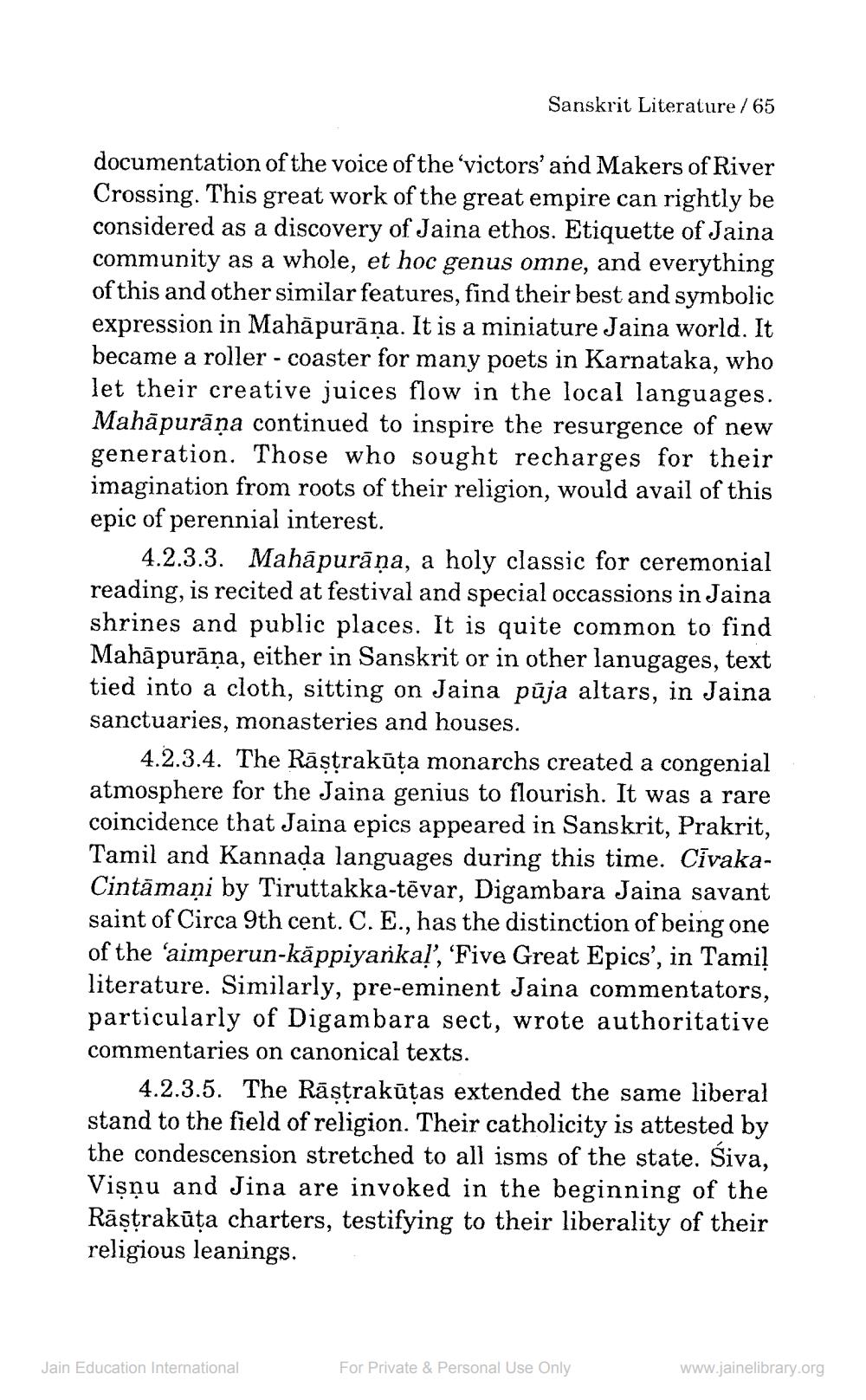________________
Sanskrit Literature / 65
documentation of the voice of the victors' and Makers of River Crossing. This great work of the great empire can rightly be considered as a discovery of Jaina ethos. Etiquette of Jaina community as a whole, et hoc genus omne, and everything of this and other similar features, find their best and symbolic expression in Mahāpurāņa. It is a miniature Jaina world. It became a roller-coaster for many poets in Karnataka, who let their creative juices flow in the local languages. Mahāpurāņa continued to inspire the resurgence of new generation. Those who sought recharges for their imagination from roots of their religion, would avail of this epic of perennial interest.
4.2.3.3. Mahāpurāņa, a holy classic for ceremonial reading, is recited at festival and special occassions in Jaina shrines and public places. It is quite common to find Mahāpurāņa, either in Sanskrit or in other lanugages, text tied into a cloth, sitting on Jaina pūja altars, in Jaina sanctuaries, monasteries and houses.
4.2.3.4. The Rāstrakūta monarchs created a congenial atmosphere for the Jaina genius to flourish. It was a rare coincidence that Jaina epics appeared in Sanskrit, Prakrit, Tamil and Kannada languages during this time. CivakaCintamani by Tiruttakka-tēvar, Digambara Jaina savant saint of Circa 9th cent. C. E., has the distinction of being one of the 'aimperun-kāppiyanka”, “Five Great Epics’, in Tamil literature. Similarly, pre-eminent Jaina commentators, particularly of Digambara sect, wrote authoritative commentaries on canonical texts.
4.2.3.5. The Rāstrakūtas extended the same liberal stand to the field of religion. Their catholicity is attested by the condescension stretched to all isms of the state. Śiva, Visņu and Jina are invoked in the beginning of the Rāstrakūta charters, testifying to their liberality of their religious leanings.
Jain Education International
For Private & Personal Use Only
www.jainelibrary.org




